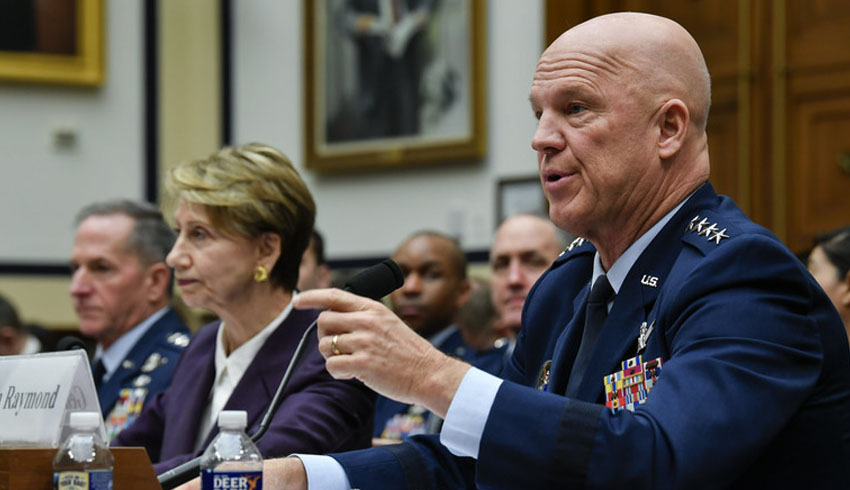At the same time, Secretary Barrett, Air Force Chief of Staff General David Goldfein, and Gen Raymond acknowledged that achieving that goal within a tight budget for fiscal year 2021 demands "tough but necessary trades".
The Air Force is making significant progress on the first, Gen Goldfein said, noting a field exercise of a capability known as the Advanced Battle Management System conducted in December that allows all platforms from all services to connect and move the joint force closer to connecting “all shooters to all sensors”.
A second test is scheduled next month.
Secretary Barrett explained, "The National Defense Strategy calls on the Department of the Air Force, as a critical component of the joint force, to deter and, if needed, defeat these threats. This fiscal year ‘21 budget request sets the course for the Department to accomplish these aims."
Gen Goldfein reinforced the comments made by Secretary Barrett, saying that "in a flat budget environment" the Air Force must successfully connect "all platforms, sensors and weapons in a battlefield network" and "must find internal savings to pay for new capabilities".
When fully refined and operational, this battle network will allow warfighters to collect, analyse and transmit vast amounts of data from air, land, sea, space and cyber to all services and commanders.
Fuelled by US$15.4 billion ($25 billion) for the Space Force that is part of the $169 billion ($274.6 billion) Air Force proposal, Gen Raymond said it is targeted to fund "a very strong pivot towards space superiority and the foundational space situational awareness, command and control, and training infrastructure capabilities that underpin space superiority".
Since the newest service was created on 20 December 2019, as the sixth independent branch of the military, Gen Raymond said the focus, and many of the decisions, has been to build a "Space Force that is lean, agile and mission focused" and "unconstrained by past constructs and thinking".
"When fully established, we may not look like the services you’ve become accustomed to, but we will be equally proficient at providing space forces ready and willing to protect US and allied interests in space while providing unequalled capability to the joint force," he told members of the committee.
Yet only minutes earlier, the committee’s chairman, Representative Adam Smith, said he was "ambivalent" about the need to establish a Space Force.
"Space is central to everything we do. It is the centre of our command and control structure … it deserves special attention. I get that; I understand that. The concern is, is it just another bureaucracy?" Smith asked.
"General Raymond that is your challenge; to make sure it works in an efficient and effective way and it isn’t just another bureaucracy."
Gen Raymond emphasised that the Space Force would be "lean, agile and mission focused".
"We have an opportunity to build this service to enhance the lethality of our joint force while optimising our ability to dominate in space," he said.

